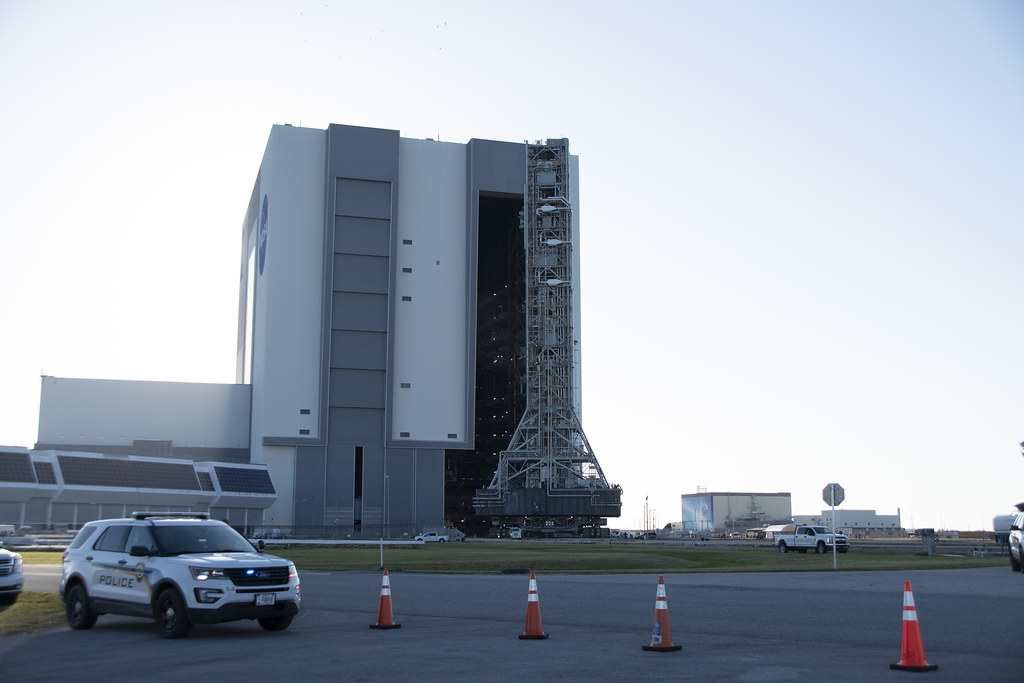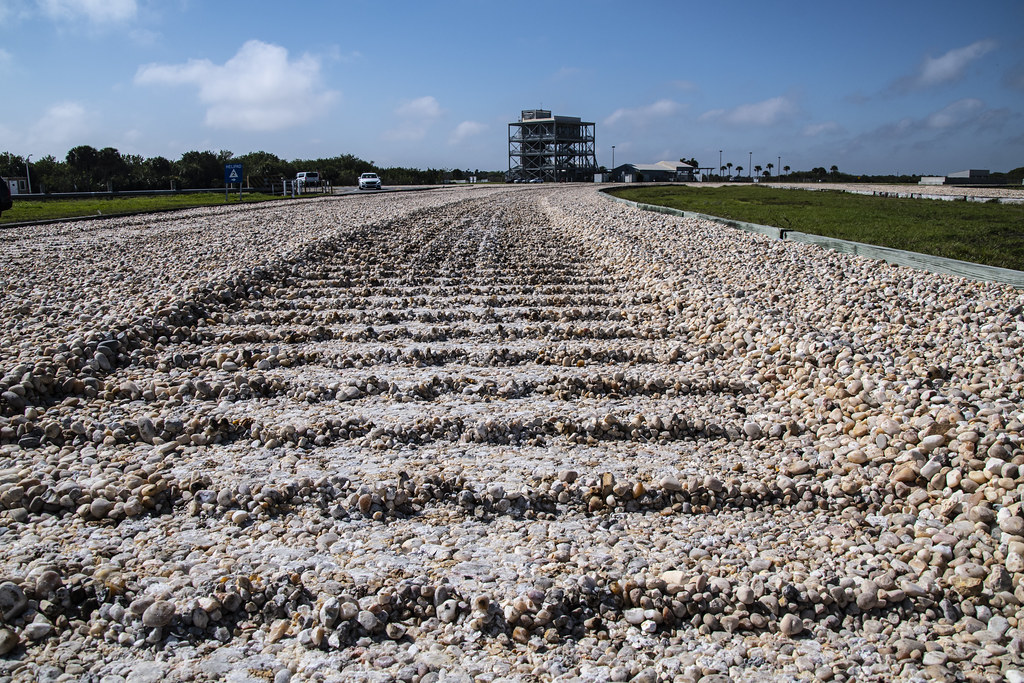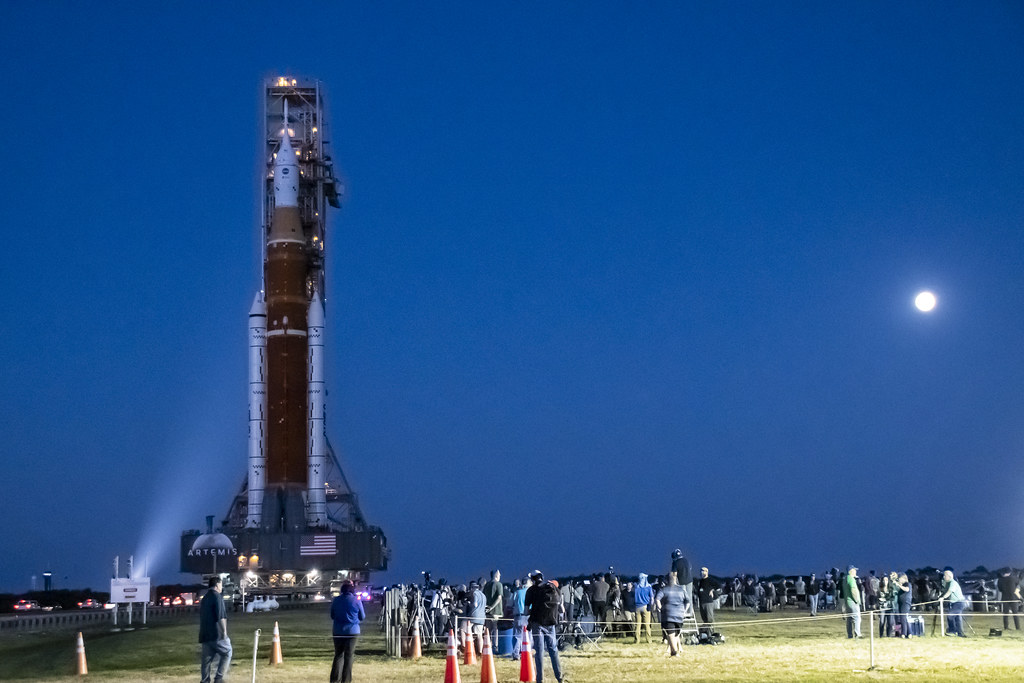On 17 March 2022 the Space Launch Systems rocket (SLS), with Orion atop it, left the Vehicle Assembly Building at NASA’s Kennedy Space Center at around 23:00 CET (22:00 GMT) to begin its trip to Launchpad LC39B.
This video shows the slow process of moving a mega-Moon rocket in timelapse form.
While the rocket will propel Orion to supersonic speeds, the rocket itself is moved slowly but securely to the launchpad. Traveling at a maximum speed of just 1.3 km/h, the 6.5-km voyage took nearly 12 hours to complete on a specially designed crawler vehicle.
Launching Orion and the European Service Module into Earth orbit and onto the Moon requires a huge amount of energy and the size of the mega-Moon rocket SLS is hard to convey in photos.
It starts with the Vehicle Assembly Building that is one of the largest buildings in the world by volume, and has the largest doors in the whole world. Everything is relative and if you open the largest doors in the world even one of largest and most powerful rockets in the world can look small!
Standing at the top floor, where the top of the rocket with Orion and the European Service Module is not for people who are afraid of heights:
At 100 m tall, the SLS rocket is roughly the height of the Elizabeth Tower (Big Ben) in London, UK, or 16 giraffes stacked on top of each other. If you laid the rocket on the ground, it would take over a minute to walk from the engines to the tip of the launch abort system.
Then there is the crawler vehicle that moves the rocket to the launchpad, practically a moving building in its own right!
The crawler is almost 35 m wide and each end can be raised or lowered indivudally to keep the rocket level as it moves up to the launchpad.
More on the crawler in this video:
After almost a 12-hour voyage the first Artemis rocket got to the launchpad, and will send Orion to the Moon and back, farther than any human-rated spacecraft has travelled before. ESA’s European Service Module is the powerhouse that fuels and propels Orion and provides everything needed to keep astronauts alive, including water, oxygen, power and temperature control.
Next steps
Teams have connected ground support equipment to the rocket and spacecraft, including electrical, fuel environmental control system ducts, and cryogenic propellant lines. On 21 March all elements of the integrated system were powered in preparation for the wet dress rehearsal test planned for April.
The two-day wet dress rehearsal test will demonstrate loading the super-cold, propellants into the rocket, conduct a launch countdown, and practice safely removing propellants at the launch pad. For the European Service Module this means the subsystems will be powered on for check-out, the criteria to authorise the launch will be verified, and finally the system will be put in the launch configuration.
After wet dress rehearsal, engineers will roll the rocket and spacecraft back to the Vehicle Assembly Building for final checkouts before launch.







 Automated Transfer Vehicle page
Automated Transfer Vehicle page ATV blog archive
ATV blog archive
Discussion: no comments